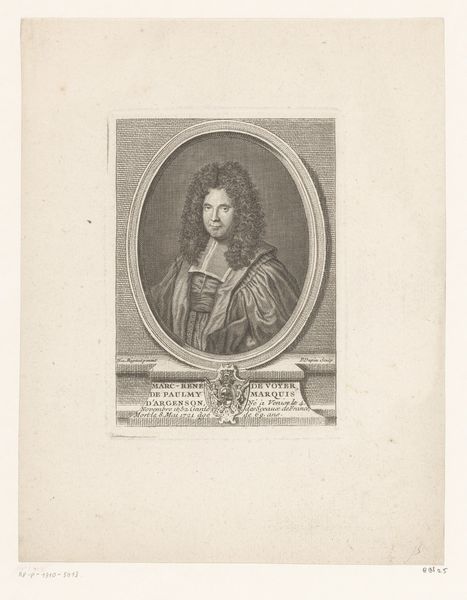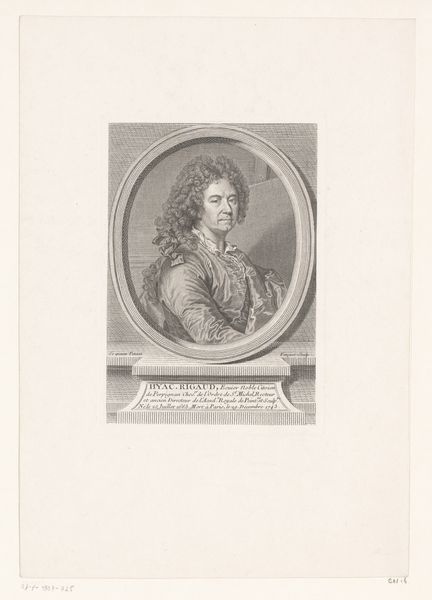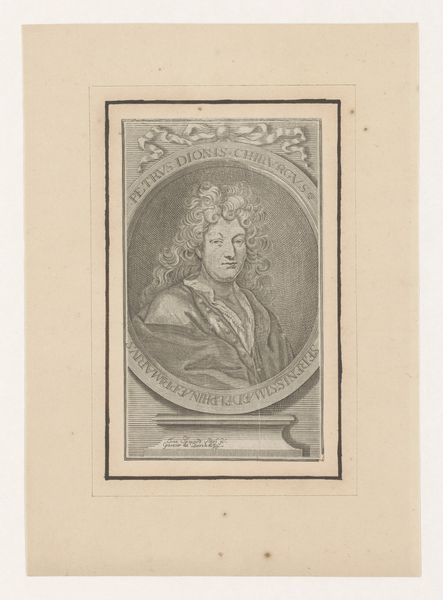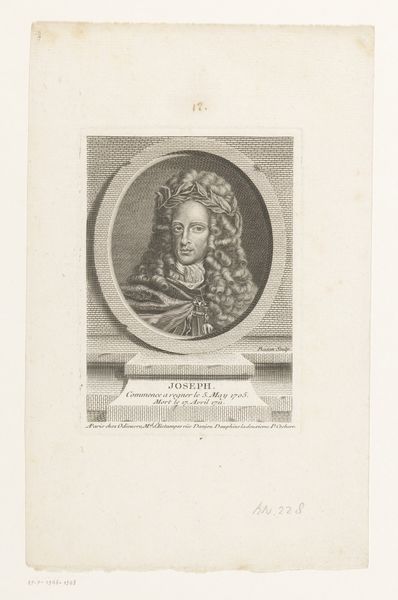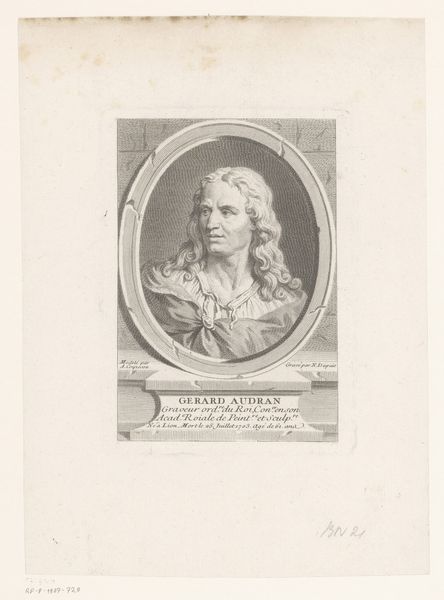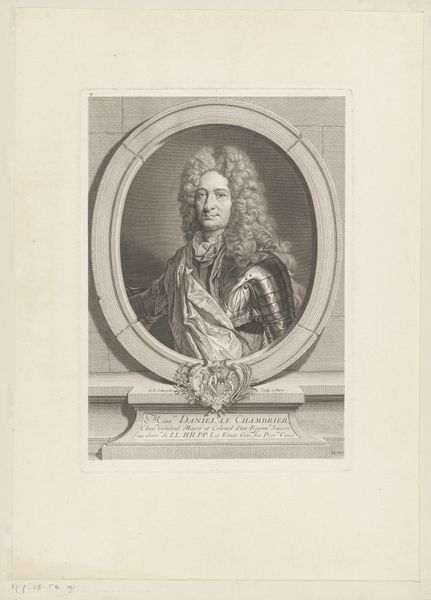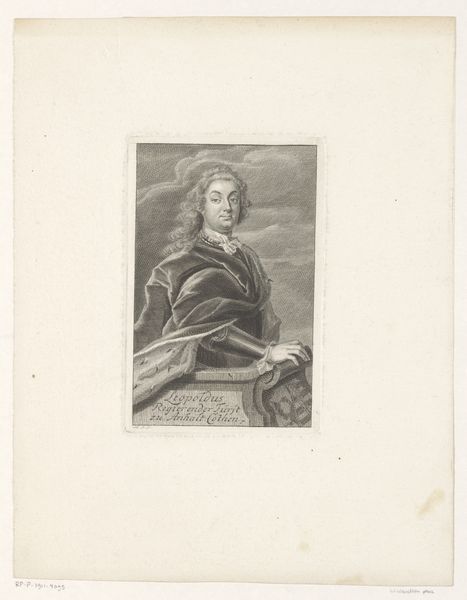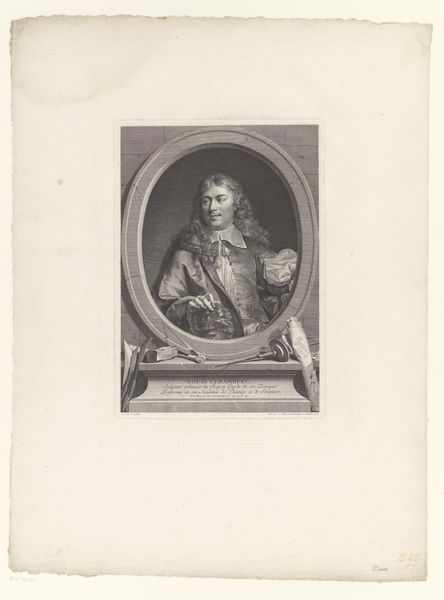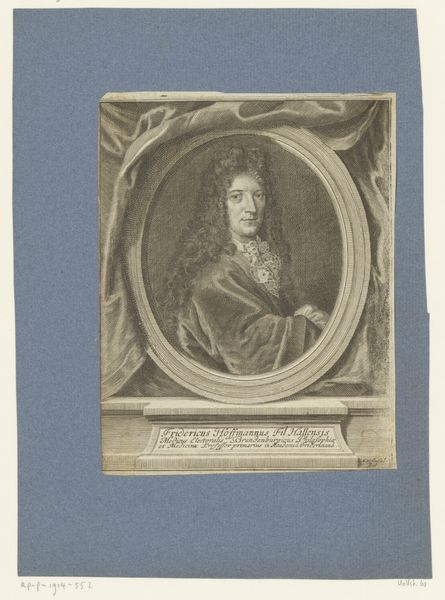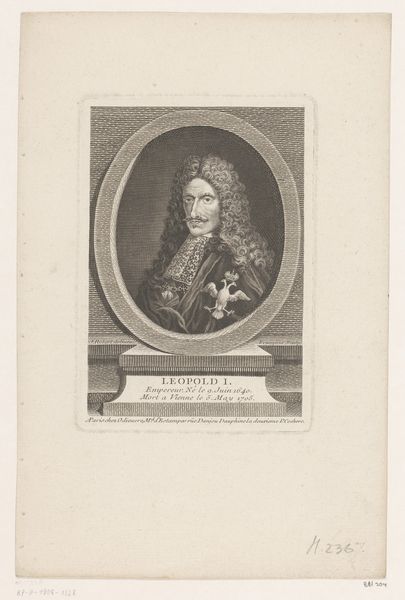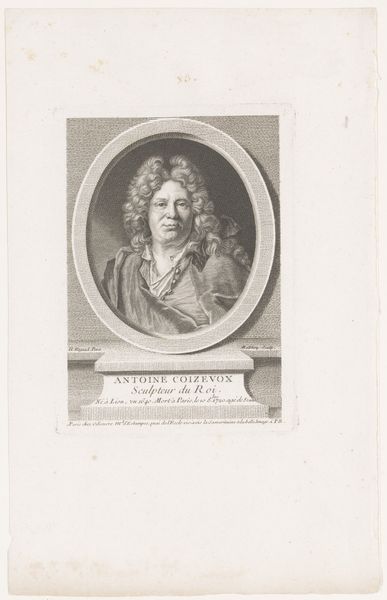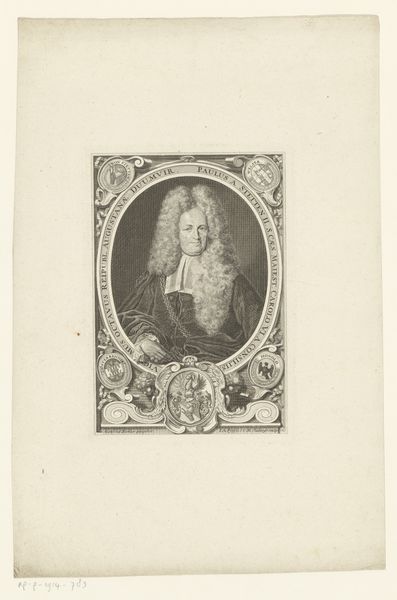
print, engraving
#
portrait
#
baroque
# print
#
old engraving style
#
limited contrast and shading
#
remaining negative space
#
engraving
Dimensions: height 146 mm, width 104 mm
Copyright: Rijks Museum: Open Domain
Curator: Here we have a work by Georg Friedrich Schmidt, titled "Portret van Joseph Parrocel," created in 1737. It's an engraving, a type of print. What's your initial take on this piece? Editor: Oh, it’s interesting! I am immediately drawn to the hair. That Baroque cascade of curls feels… flamboyant. It gives him a kind of playful defiance, set against that very proper oval frame. There's a lot of empty space around him though... a feeling of the person adrift. Curator: It's a study in contrasts, certainly. Consider the labour involved in creating an engraving like this. Every line, every gradation is deliberately etched. It was a process of skilled craftsmanship and exacting reproduction, deeply rooted in the printmaking traditions of the time, before the dominance of cheaper, faster processes. And engraving allowed for widespread circulation. Editor: It does feel very intentional. Like a performance of portraiture rather than a direct glimpse. You know, the way the subject’s gaze seems to catch yours, it is if Parrocel the artist and Parrocel the sitter have had a conversation, then included you as a polite witness! There's such detail worked in through, creating shape. And the stark medium amplifies those details wonderfully. Curator: Absolutely. The choice of engraving as a medium allowed for dissemination. Prints democratized art to an extent, making portraits and other images available to a wider audience. They also fulfilled a role similar to that of photographs today – commemorating individuals and spreading their likeness. The materiality matters. This wasn’t an original painting only for the elite, but an image intended to circulate and be consumed. Editor: That's such an interesting perspective, framing prints as an early form of media. It makes me consider what is omitted by contrast. What details were seen, or perceived by contemporaries, and left on the cutting room floor by Schmidt? Maybe his intention was more informational or biographical! Curator: It’s the beginning of the art celebrity culture. Georg Friedrich Schmidt makes Joseph Parrocel into a brand, creating accessible artwork in a time without cameras. Editor: Seeing it that way enriches the picture. And, look, now I cannot unsee Joseph Parrocel's cheeky look on his face! Curator: A powerful piece reflecting both artistic skill and its place in a broader material and social context, even several centuries after it was made. Editor: It truly invites consideration to how it came to be and invites questions about context and dissemination - all from the most careful set of lines and details!
Comments
No comments
Be the first to comment and join the conversation on the ultimate creative platform.
